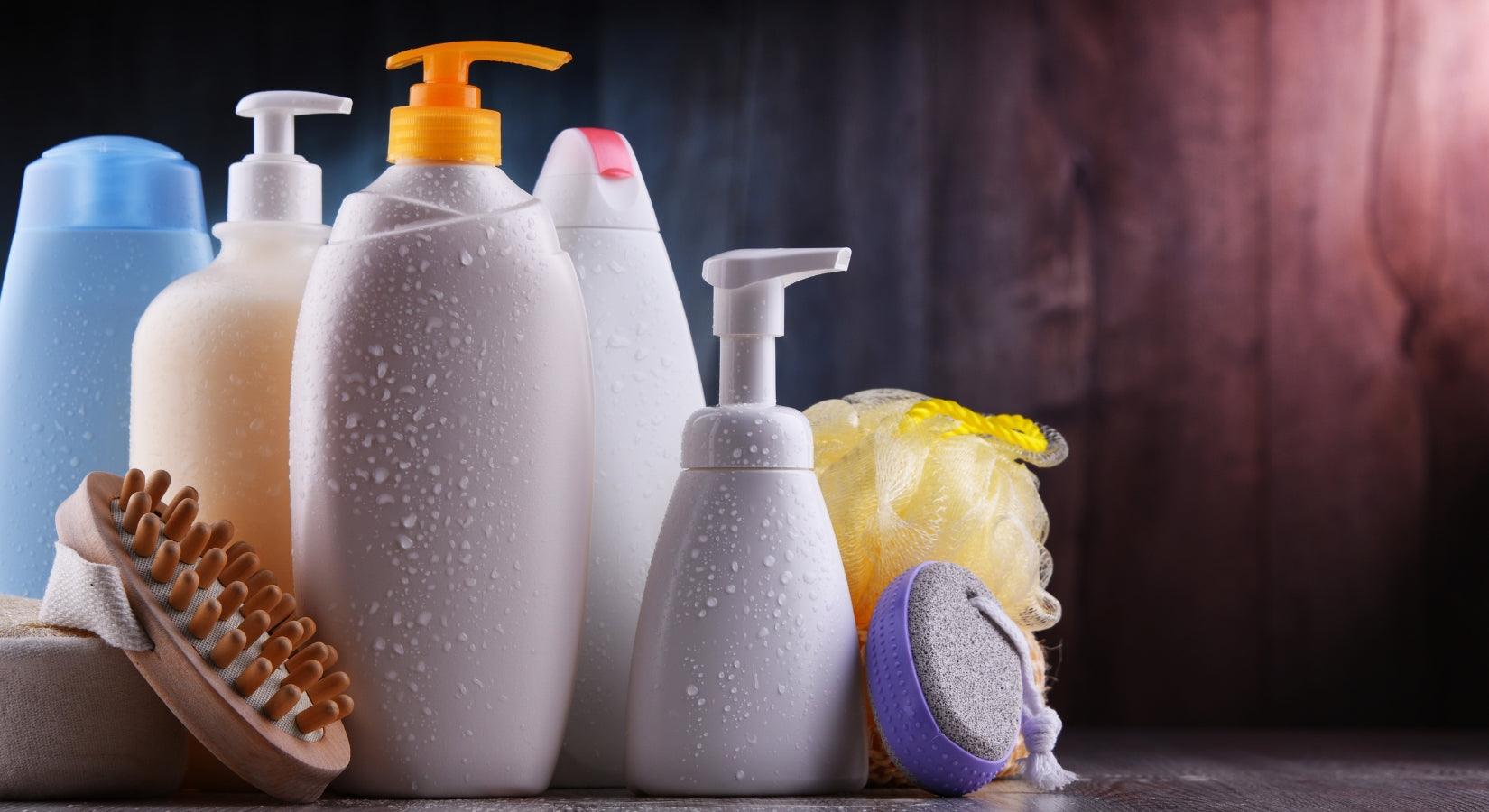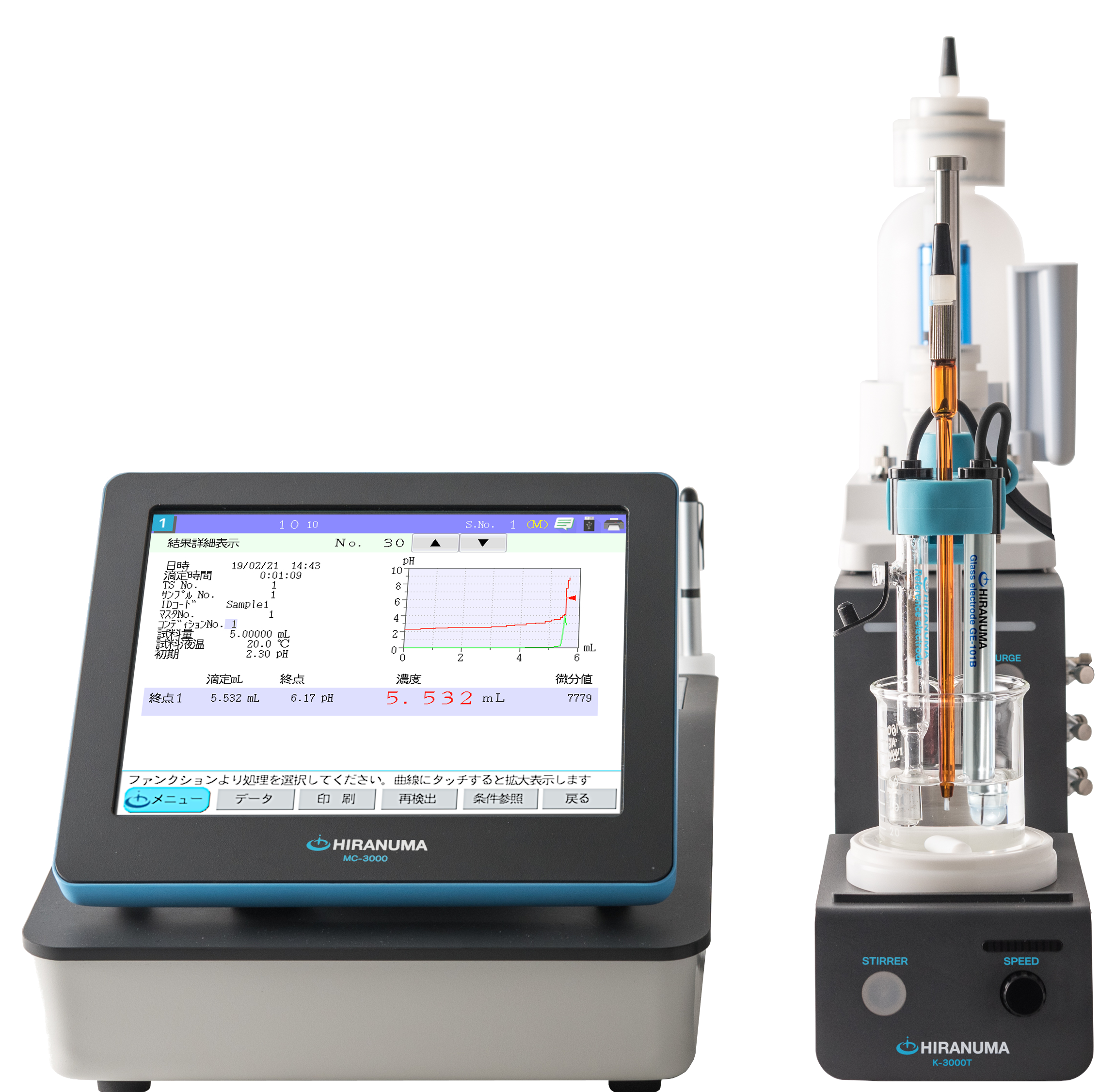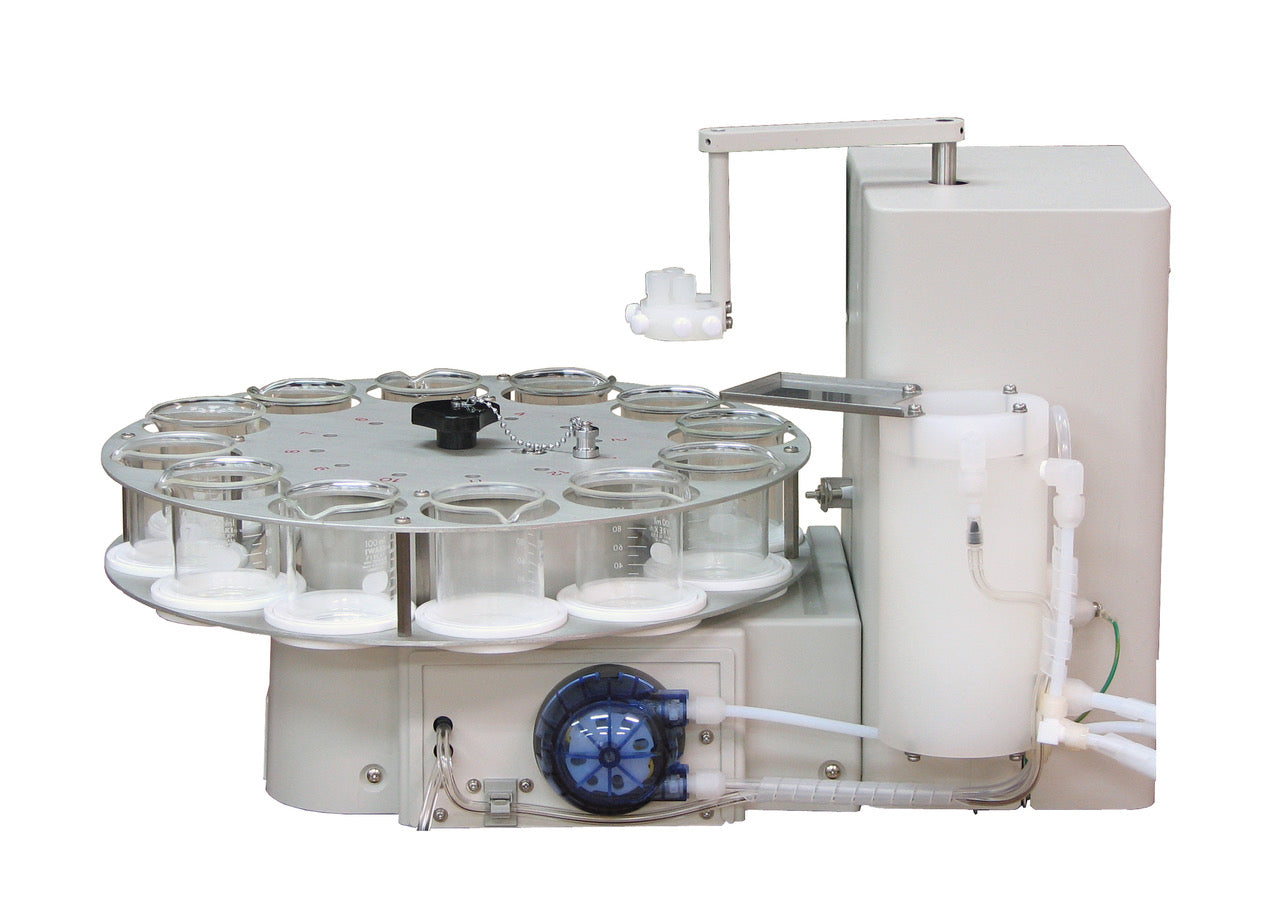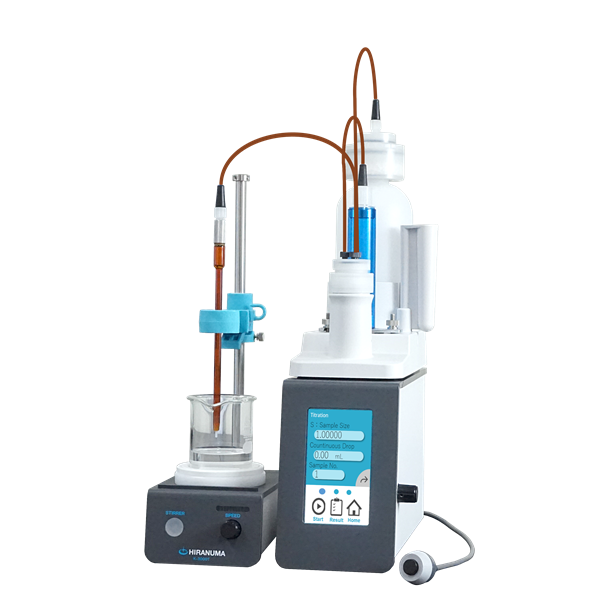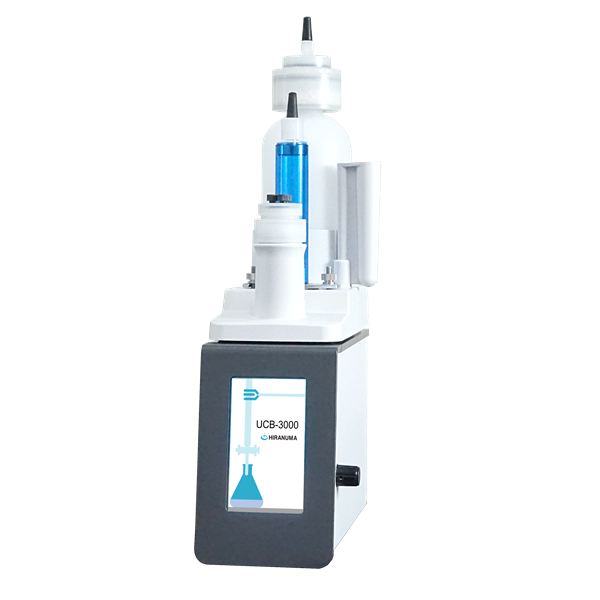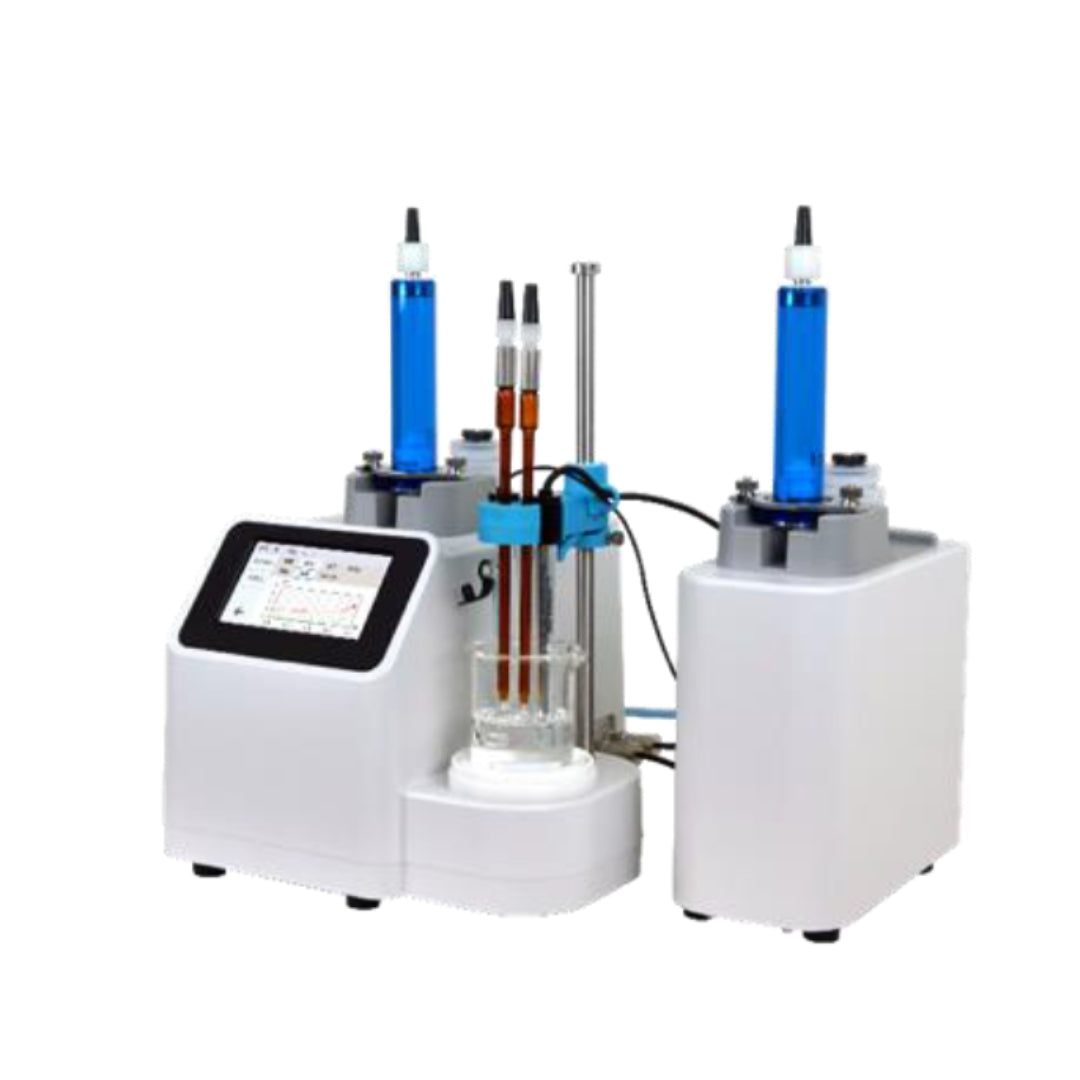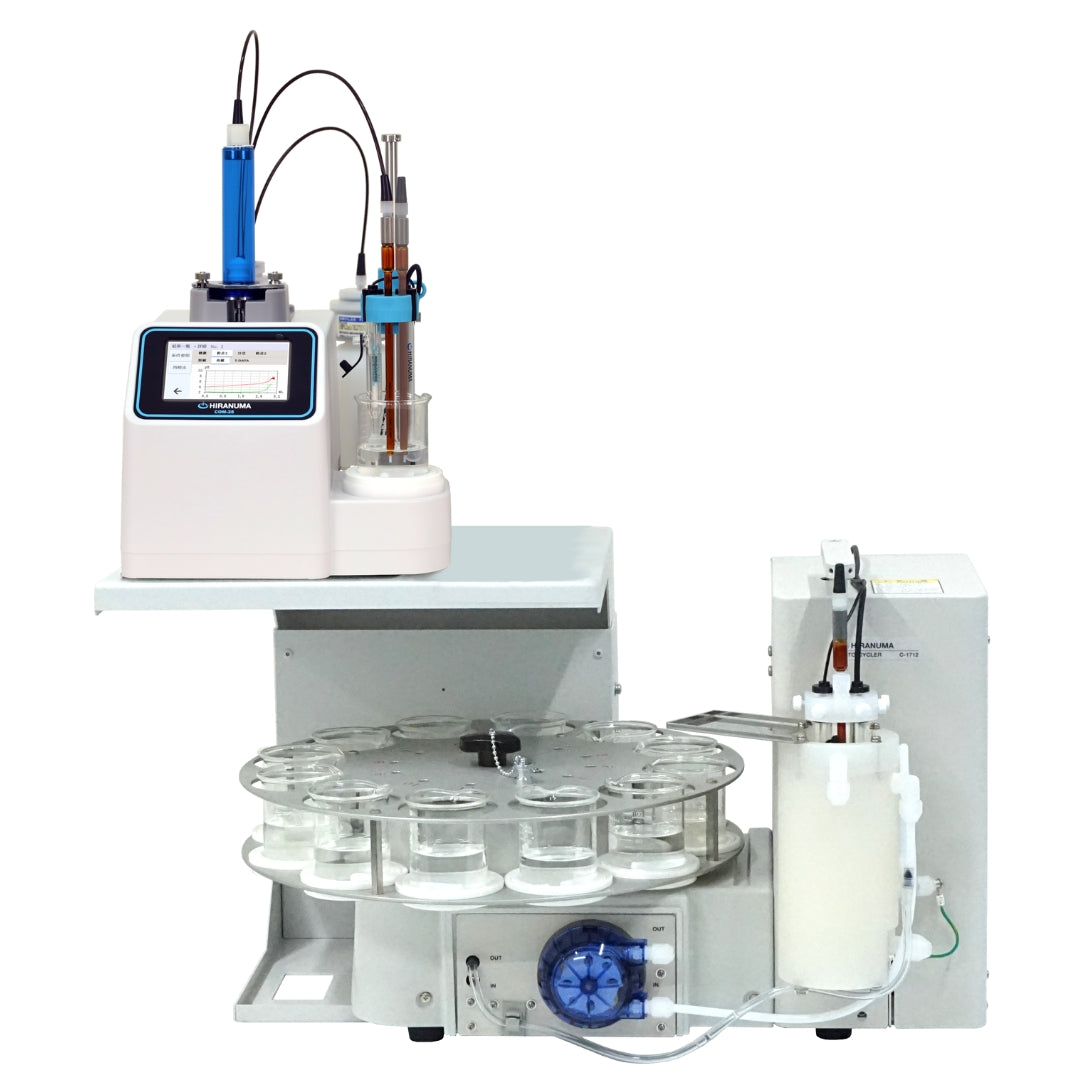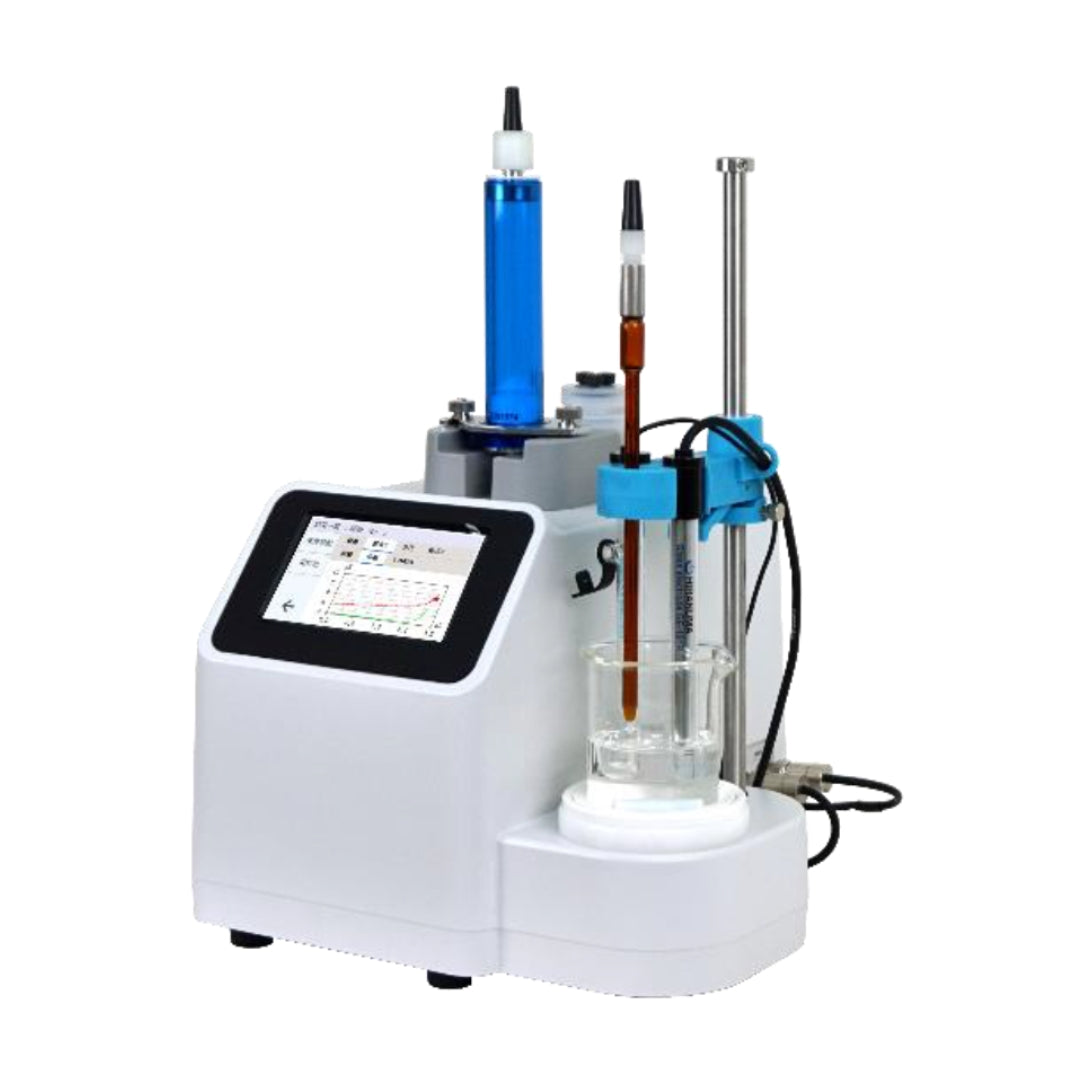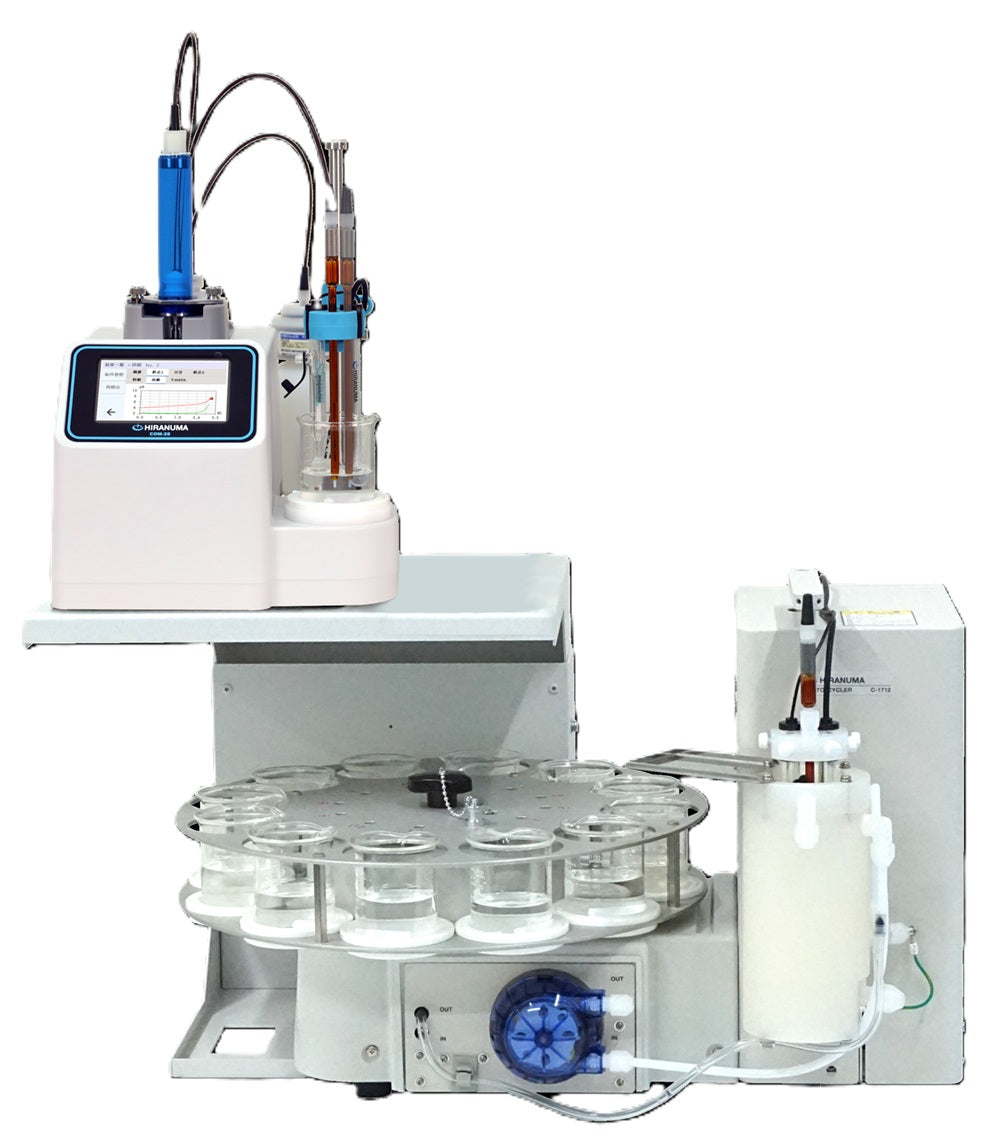| HIRANUMA APPLICATION DATA | Automatic Titrator | Data No. | C6 | Apr.5,2019 |
| Detergents・Bath additives・Cosmetics | Quantitative determination of sodium sulfate in bath additive |
1. Abstract
The precipitation titration using lead ion-selective electrode achieves the measurement of sulfate ions. Lead sulfate is generated by adding lead nitrate to sulfate ion. The potential reading with lead ion-selective electrode differs depending on the concentration of sulfate ion in sample solution. The maximum change in potential is observed when it reaches the equivalent point of sulfate and lead ions. The concentration of sulfate ion is determined by the titrant volume consumed until it reaches the inflection point.2. Configuration of instruments and reagents
| (1) | Configuration | ||
| Main unit | : | Hiranuma Automatic Titrator COM Series | |
| Electrode | : | Lead ion-selective electrode Pbi-081 Glass-reference combination electrode GR-501BZ |
|
| (2) | Reagents | ||
| Titrant | : | 0.01 mol/L lead nitrate standard solution Dissolve 1.6560 g of lead (II) nitrate in DI water and prepare 500 mL solution. |
|
| Standardization solution | : | 0.01 mol/L sulfuric acid standard solution | |
| Solvent | : | 50 mL of diluted methanol Mix methanol and DI water with 4:1 volume ratio. |
|
| Additive solution | : | Diluted nitric acid (10 % [v/v]) |
3. Measurement procedure
| (1) | Standardization of 0.01 mol/L lead nitrate standard solution. i) Dispense 10 mL of 0.01 mol/L sulfuric acid standard solution into a 100 mL beaker with volumetric pipette. ii) Add 50 mL of solvent and stirring bar to the beaker. iii) Immerse the electrodes into sample solution and titrate with 0.01 mol/L lead nitrate standard solution. |
| (2) | Measurement of sodium sulfate in bath additive i) Accurately weigh about 0.4 g of bath additive with 0.1 mg digit. Dissolve it with DI water and prepare 200 mL solution using volumetric flask. ii) Dispense 5 mL of the above solution into a 100 mL beaker with a volumetric pipette. This aliquot of sample solution contains about 0.01 g of sample (0.4 g × 5 mL/200 mL). iii) Add 50 mL of solvent and a stirring bar to the beaker. vi) Immerse the electrodes into sample solution and add a few drops of diluted nitric acid by a dropper with reading the pH using GR-501B to adjust the pH to about 4. Start titration with 0.01 mol/L lead nitrate standard solution. |
4. Measurement conditions and results
Examples of titration conditions
(1) Standardization of 0.01 mol/L lead nitrate standard solution.

(2) Titration of sodium sulfate with lead nitrate

Measurement results
(1) Standardization of 0.01 mol/L lead nitrate standard solution
| Number of measurement |
Size (mL) |
Titrant volume (mL) |
Factor |
|---|---|---|---|
| 1 | 10 | 10.118 | 0.9854 |
| 2 | 10 | 10.129 | 0.9843 |
| Average | 0.9849 | ||
(2) Titration of sodium sulfate with lead nitrate
| Number of measurement | Actual Sample Size (mL) | Titrant volume (mL) | Concentration (%) |
|---|---|---|---|
| 1 | 0.0100 | 5.826 | 81.503 |
| 2 | 0.0100 | 5.832 | 81.587 |
| 3 | 0.0100 | 5.867 | 82.077 |
| 4 | 0.0100 | 5.841 | 81.713 |
| 5 | 0.0100 | 5.834 | 81.615 |
| Statistic calculation | Average | 81.70 % | |
| Standard deviation | 0.22 % | ||
| Coefficient of variation | 0.27 % | ||
Examples of titration curve
|
|
|
5. Note
(1) The reading of the potential might decrease with repeated use of the lead ion-selective electrode. Polishing the surface of the lead ion-selective electrode with a fine sandpaper (P800 or finer) improves the condition of the electrode.
(2) The response sensitivity of the lead ion-selective electrode might decrease because of the influence of coexisting materials and the measurement would be failed. There is a possibility that this method cannot be applied for a sample containing multiple components like plating solution.
(3) The total amount of sodium sulfate and magnesium sulfate are detected when the sample contains both substances. The magnesium ion of magnesium sulfate can be determined by photometric titration. The concentration of sodium sulfate can be calculated by subtracting the concentration of magnesium sulfate from the result of total amount.
Keywords: Sulfate ion, Precipitation titration, Lead ion-selective electrode, Bath additive

